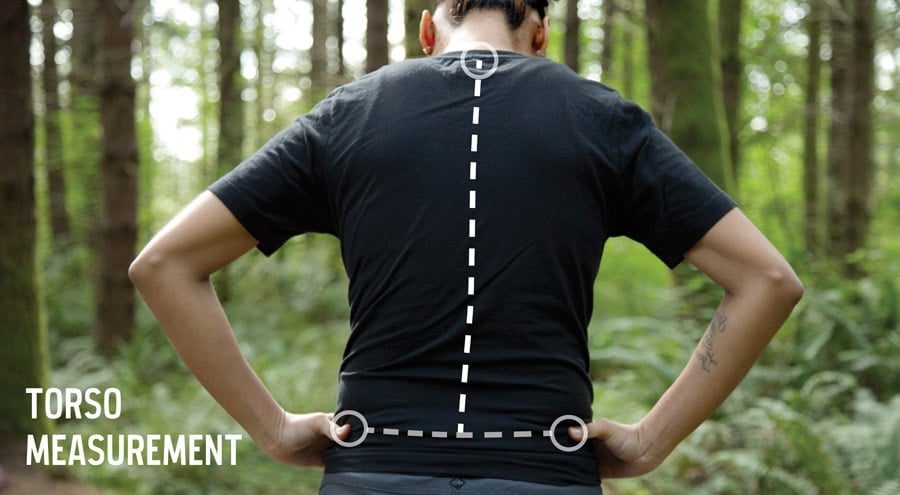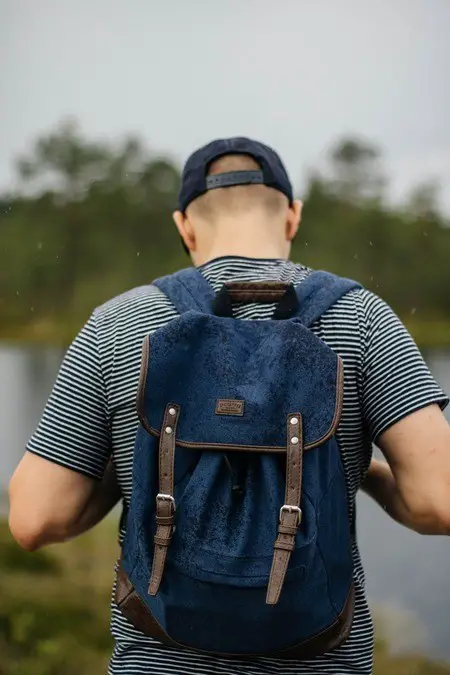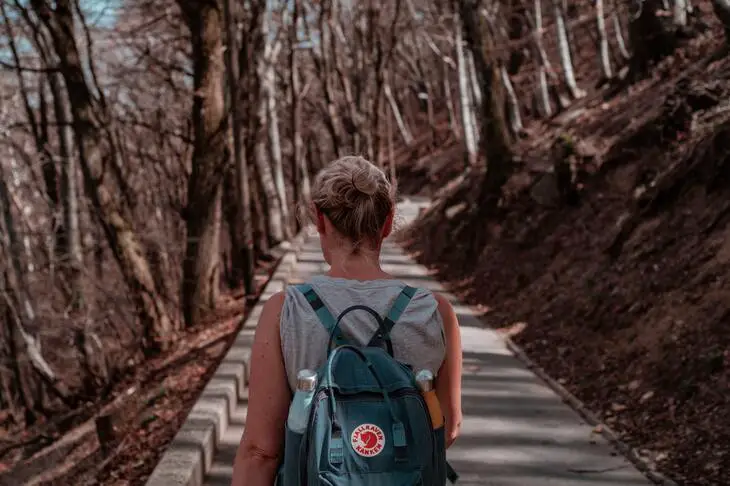How To Adjust Backpack Straps (For Hiking & School)
Your backpack is your companion wherever you go – carrying all your essentials where you need them. But, even if we have the perfect backpack suited for us, if it's not adjusted correctly, it can lead to back pain or possible injuries. If you’re hiking, making sure your backpack sits as comfortably as it can is just as important as what’s in it.
How can we make sure our bag is the right fit for us? Follow this guide to learn how to adjust backpack straps and how we can be more comfortable navigating our everyday lives.
How To Choose The Backpack Size That Fits Your Body
Most people assume a backpack should be relative to a person’s height, but this is wrong. It’s actually measured by your torso length – the distance between the top of your hip bone and the C7 vertebra (bottom of your neck). Find the top of your hip bone with your hands and then the small bone that sticks out at the back of your neck. That's what you want to measure.
Once you have the measurement, head to any outdoors store, and see what backpacks feel comfortable to you. If it doesn’t feel right, that’s because it isn’t right. Don’t head straight for the high-end designer wear if they’re going to cause you pain.

How To Adjust Backpack Straps (For Hiking & School)
Now that we have the perfect fit, adjusting the backpack so that it’s comfortable can be confusing. Below is a guide on how to adjust backpack straps on different bags.
Hiking Backpacks
There are a lot of straps on a hiking backpack, which can be overwhelming. Once you know what each one does, adjusting them should be easy. Below is a list of the different straps.
Start with loosening all the straps. If you can, add some weight to the bag so you can determine what is most comfortable. You’ll want to adjust the torso length before anything, to make sure it sits comfortably.
Next, tighten the hip strap so that it’s across your upper hip. You don’t want it too tight that it squashes your hips.
Adjust the shoulder straps to take the shape of your shoulder. Again, it's vital to get the balance right here, as if it's not equally distributed, the weight will slouch on the hip or bulk on the shoulders.
After, position the chest strap along the two shoulder straps, preferably on the top of your chest. Once that’s tight enough, pull the load lifter straps from the side of the bag. You may need to find someone to help you with this part. These are designed to pull the weight up closer to your body.
Finally, finish on the compression straps on the front. These will compress the space in between to stop them from swaying. Don't tighten too much, or you will damage the contents of your bag.
School Backpacks
It may not seem as convoluted but making sure your school backpack sits comfortably is key to avoiding a bad posture or neck/back pain.
To start, don’t wear your backpack on one shoulder. It may look stylish, but the weight on one of your shoulders is going to cause neck and back pain, along with messing up your posture. Use both straps for the most comfortable fit.

As with a hiking backpack, the straps should take the shape of your shoulders. This is to ensure the weight is evenly distributed.
You will also want the backpack higher; too low will cause you back pain and push the weight down. The ideal position is just above or in between your waist.
Another tip is to make sure the backpack is adjusted based on the thickness of your clothes.
For example, if you're wearing a thick winter jacket, the straps won't take the shape of your shoulders. You'll need to readjust them accordingly.
Drawstring Backpacks
A drawstring bag is a universal and handy bag for anyone. It has only one compartment and is useful for day trips or a school bag for little kids. You can even make a drawstring backpack with patience and the right tools.
Just like a normal backpack, the weight distribution lies on the shoulders, and they can be adjusted to ease the stress. First, add the contents to your drawstring bag. Seal it by pulling the two outer strings until it’s shut tight.
You’ll want to locate the hidden loops in the opening of the bag. Pulling these together will adjust the height on your back. Once you have it at the right height (just below the C7 vertebra bone), you can tie a knot in each loop and hide them in the opening. Quick and easy to adjust for a convenient bag!

Popular Backpack Brands & How To Adjust Them Correctly
How To Adjust Herschel Backpack
Your compact Herschel backpack will have the straps located at the bottom of the shoulder strap. Simply pull the straps down to lift the bag higher or loop them back through to lower. The ideal height for a mini backpack is in the center of your back.
How To Adjust Mini Fjallraven Kanken Backpack
Fjallraven Kanken backpacks have a special kind of shoulder strap – it uses buttons instead of a loop lock to adjust the height of your bag. Simply unclip the three buttons on the strap and slide them through the loop ring to the desired height. Simple!

How To Adjust Osprey Backpack
Osprey is a leading brand in hiking backpacks. Their bags come with shoulder harnesses, which ease the load on your shoulders and your back. You can adjust the harness by approximately 3 inches. For this reason, the ends of the shoulder straps should be roughly 2-3 inches below your armpits for the most comfortable and secure backpack.
How To Adjust North Face Backpack Straps
If you have a North Face bag, adjusting it couldn't be easier. You'll need to start with the shoulder straps. Simply pull the strap at the bottom loophole first. Ensure the backpack is sitting comfortably on your lower back and hips. Repeat on the other side, and you'll have it fitting perfectly! If you frequently carry your North Face backpack with a lot of weight, you may need to make additional adjustments.
People Also Ask (FAQs)
How do you fix a loose backpack strap?
If the strap on the bag is loose or broken, it may need to be replaced. It could also be the grips on the holes have been worn down. You can use double-sided Velcro through the bottom loop of the strap to prevent it from falling through the buckle until you can find a replacement.
What are the loops on my backpack straps for?
These are also known as gear loops, or aptly named backpack loops, are for tying extra gear onto your backpack, such as a helmet. They were originally used for miners to attach a pickaxe or similar to their bag for their journey below.
Can you add compression straps to a backpack?
If you are a keen seamster, or even a novice, you can easily sew on compression straps to your backpack. While hiking, compression straps are a handy tool that will compress the load in your bag and prevent it from lurching while you walk.
How do you replace a backpack strap buckle?
You will need to use a seam ripper to break the seam on the original loop holding the buckle. Next, simply remove the broken buckle on the backpack, and slip in the new one. You will then need to sew or hot glue it back into place and reattach the shoulder straps.
Conclusion
Whether you're a new hiker, preparing your new school backpack, or simply just interested, it's never been easier to make your bag comfortable. Now with the knowledge on how to adjust backpack straps, we can travel more comfortably and strap ourselves into better posture and fewer pains and aches.
